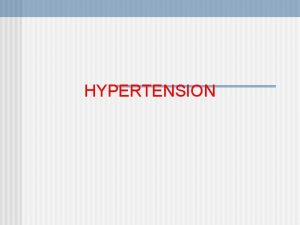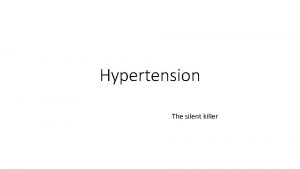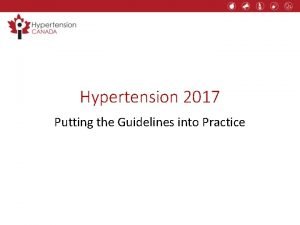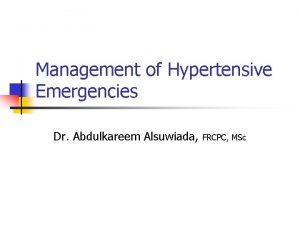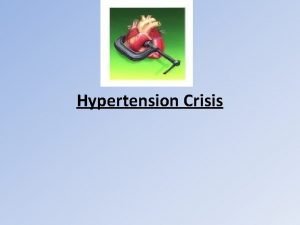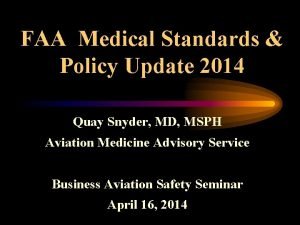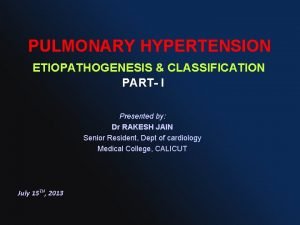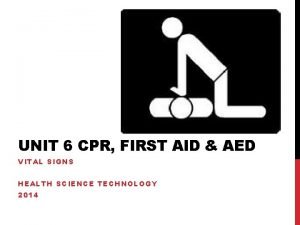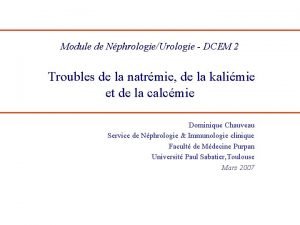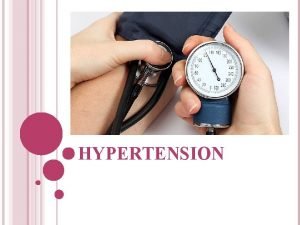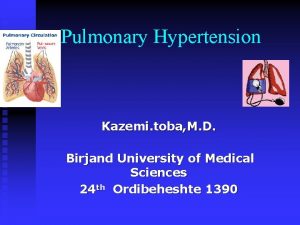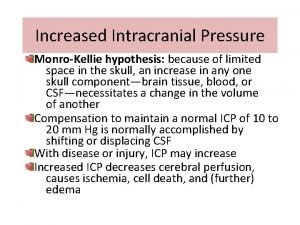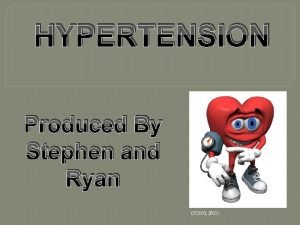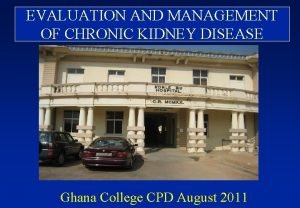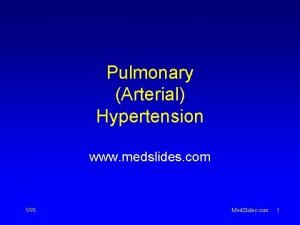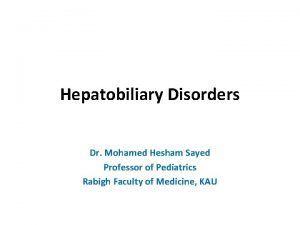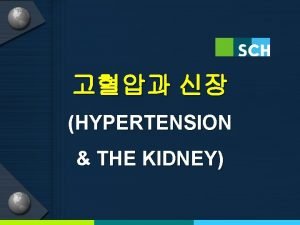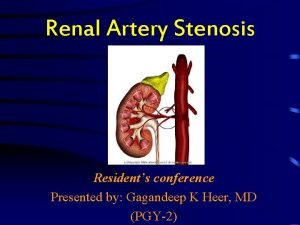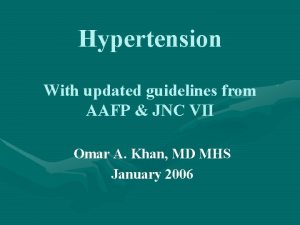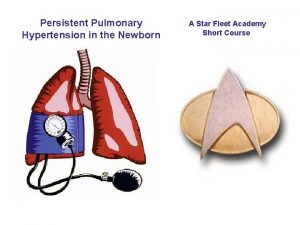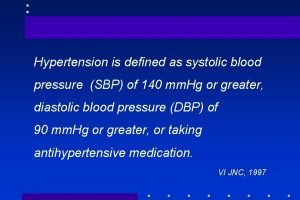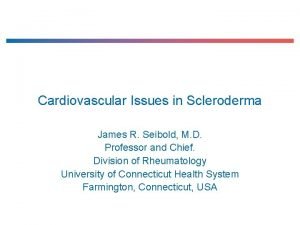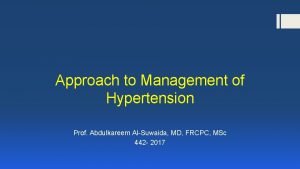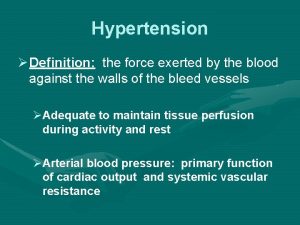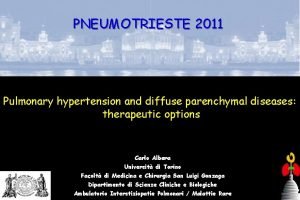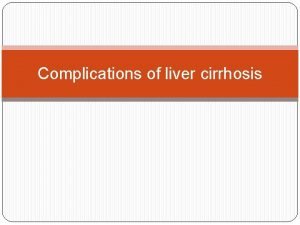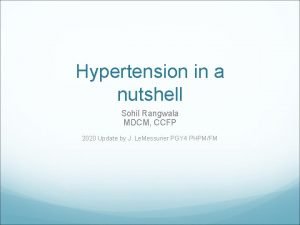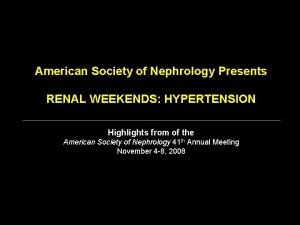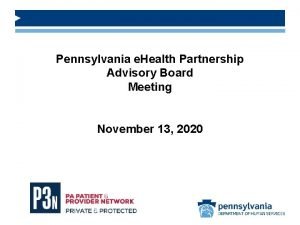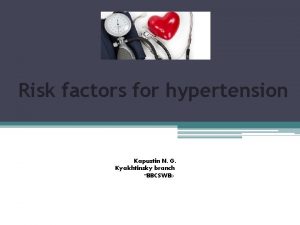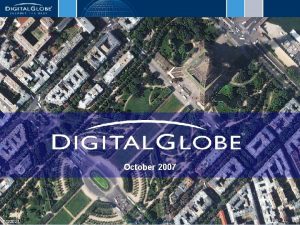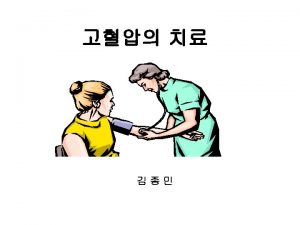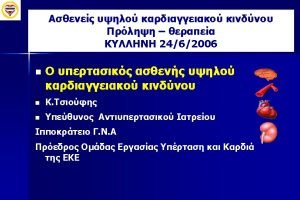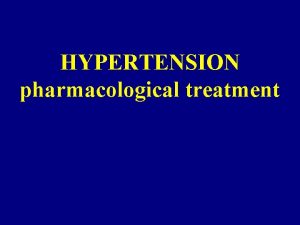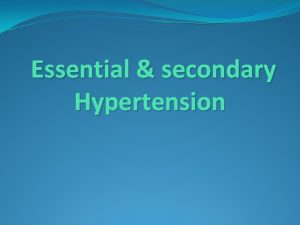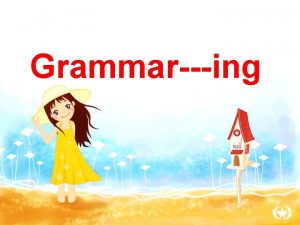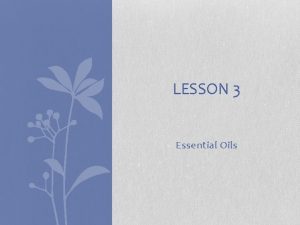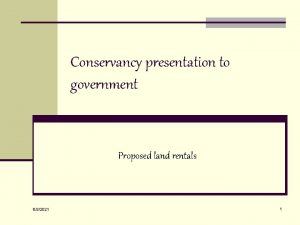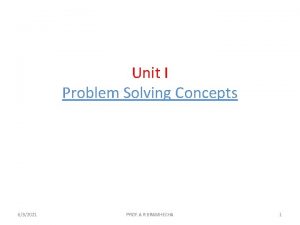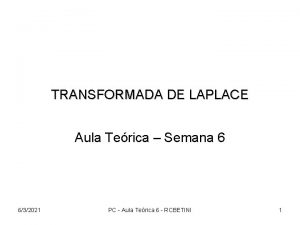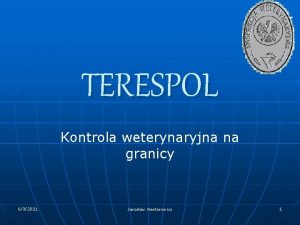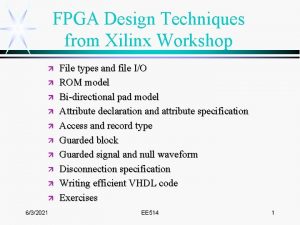Essential Hypertension 632021 1 Hypertension Hypertension is not














































- Slides: 46

Essential Hypertension 6/3/2021 1

Hypertension • Hypertension is not a disease • It is an arbitrarily defined disorder to which both environmental and genetic factors contribute • Major risk factor for: – cerebrovascular disease – myocardial infarction – heart failure – peripheral vascular disease – renal failure 6/3/2021 2

This left ventricle is very thickened (slightly over 2 cm in thickness), but the rest of the heart is not greatly enlarged. This is typical for hypertensive heart disease. The hypertension creates a greater pressure load on the heart to induce the hypertrophy. 6/3/2021 3

The left ventricle is markedly thickened in this patient with severe hypertension that was untreated for many years. The myocardial fibers have undergone hypertrophy. 6/3/2021 4

• Blood pressure is a continuous variable which fluctuates widely during the day – physical stress – mental stress • The definition of hypertension has been arbitrarily set as: That blood pressure above which the benefits of treatment outweigh the risks in term of morbidity and mortality 6/3/2021 5

Blood Pressure • Exhibits a normal distribution within the population • Increasing blood pressure is associated with a progressive increase in the risk of stroke and cardiovascular disease • Risk however rises exponentially and not linearly with pressure 6/3/2021 6

At what blood pressure is a patient hypertensive? • • BHS 140/90 JNC-VI 140/90 Opt <120/<80 WHO-ISH 140/90 The current recommendation in the UK is 140/90 • However risk is important and in diabetes 130/80 6/3/2021 7

• In 95% of cases no cause can be found • In 5 -10% a cause can be found – Chronic renal disease – Renal artery stenosis – Endocrine disease, Cushings, Conn’s Syndrome, Phaeochromocytoma, GRA 6/3/2021 8

Risks of Hypertension • The risk of hypertension is considerable • The 4 th most common cause of death world-wide • Directly and indirectly responsible for >20% of all deaths • The risks of hypertension have been most thoroughly determined by the Framingham Study a longitudinal study performed in the USA 6/3/2021 9

Framingham Study • This study clearly demonstrated that the relative risk to a patient with a DBP of 99 mm. Hg compared to a DBP of 84 mm Hg for – Stroke increases 4 fold – MI increases 2 times • The same was also found to be true for systolic blood pressure • These pressure are common 6/3/2021 10

• Despite the clear relationship between blood pressure and morbidity the risk from hypertension also depends on and increases exponentially with other factors – Cigarette smoking Adds 20/10 mm. Hg – Diabetes mellitus 5 -30 X increase MI – Renal disease – Male 2 X risk – Hyperlipidaemia – Previous MI or stroke – Left ventricular hypertrophy 2 X risk 6/3/2021 11

Control of blood pressure • Blood pressure is controlled by an integrated system • Prime contributors to blood pressure are: – Cardiac output • Stroke volume • Heart rate – Peripheral vascular resistance • Each of these factors can be manipulated by drug therapy 6/3/2021 12

Sympathetic Nervous System • Sympathetic system activation produces – vasoconstriction – reflex tachycardia – increased cardiac output • In this way blood pressure is increased • The actions of the sympathetic system are rapid and account for second to second blood pressure control 6/3/2021 13

The renin-angiotensin-aldosterone system • The RAAS is pivotal in long-term BP control • The RAAS is responsible for: – maintenance of sodium balance – control of blood volume – control of blood pressure 6/3/2021 14

• The RAAS is stimulated by: – fall in BP – fall in circulating volume – sodium depletion • Any of the above stimulate renin release from the juxtaglomerular apparatus • Renin converts angiotensinogen to angiotensin I • Angiotensin I is converted to angiotensin II by angiotensin converting enzyme (ACE) 6/3/2021 15

• Angiotensin II is a potent – vasoconstrictor – anti-natriuretic peptide – stimulator of aldosterone release from the adrenal glands • Aldosterone is also a potent antinatriuretic and antidiuretic peptide • Angiotensin II is also a potent hypertrophic agent which stimulates myocyte and smooth muscle hypertrophy in the arterioles 6/3/2021 16

• Myocyte and smooth muscle hypertrophy: – are both poor prognostic indicators in patients with hypertension – partially explain why hypertension and the risks of hypertension persist in some patients despite treatment • Both the sympathetic and RAAS are key targets in the treatment of hypertension 6/3/2021 17

Aetiology of essential hypertension • The aetiology of hypertension is – Polygenic • Major genes • Poly genes – Polyfactorial • Environment • Individual and Shared 6/3/2021 18

• Likely causes: • Increased reactivity of resistance vessels and resultant increase in peripheral resistance – as a result of an hereditary defect of the smooth muscle lining arterioles • A sodium homeostatic effect – In essential hypertension the kidneys are unable to excrete appropriate amounts of sodium for any given BP. As a result sodium and fluid are retained and the BP increases 6/3/2021 19

Other factors • • • Age Genetics and family history Environment Weight Alcohol intake Race 6/3/2021 20

• AGE – BP tends to rise with age, possibly as a result of decreased arterial compliance. – Hypertension in the elderly should be treated as aggressively as in the young. They have more to lose – Studies such as EWPHE, Primary Care Study, MRC Hypertension in the Older Adult, SHEP, SYSTEUR and STOP-1 and 2 have proven that treating both diastolic and systolic hypertension in the elderly significantly reduces stoke and MI. 6/3/2021 21

• GENETICS – A history of hypertension tends to run in families – The closest correlation exists between sibs rather than parent and child – It is also possible that environmental factors common to members of the family also have a role in the development of hypertension 6/3/2021 22

• Environment – Mental and physical stress both increase blood pressure – However removing stress does nor necessarily return blood pressure to normal values – True stress responders who have very high BP when they attend their doctor but low normal pressures otherwise tend to be highly resistant to treatment 6/3/2021 23

• Sodium Intake – The SALT study and more recently the DASH study have confirmed a strong relationship between hypertension, stroke and salt intake – Reducing salt intake in hypertensive individuals does lower blood pressure – However reducing salt intake in normotensives appears to have no effect – Reducing salt intake to <1. 5 gm/day or better <0. 5 gm/day does lower BP – However there are real difficulties in achieving this level of salt restriction (fast food) 6/3/2021 24

• ALCOHOL – The most common cause oh hypertension in the young Scot – Affects 1% of the population – Small amounts of alcohol tend to decrease BP – Large amounts of alcohol tend to increase BP – If alcohol consumption is reduced BP will fall over several days to weeks. – Average fall is small 5/3 mm. Hg 6/3/2021 25

• Weight – Obese patients have a higher BP – Up to 30% of hypertension is attributable in part or wholly to obesity – If a patient loses weight BP will fall – In untreated patients a weight loss of 9 Kg has been reported to produce a fall in BP of 19/18 mm. Hg – In treated patients a fall in BP of 30/21 mm. Hg has been reported – Weight reduction is the most important nonpharmacological measure available 6/3/2021 26

Birth Weight • Birth weight is also associated with the development of hypertension in later life. • The lower the birth weight the higher the likelihood of developing hypertension and heart disease • Clearly in-utero factors affect health at a later stage. 6/3/2021 27

• Race – Caucasians have a lower BP than black populations living in the same environment – Black populations living in rural Africa have a lower BP than those living in towns – Reasons are not clear – Possibly black populations are more susceptible to stress when living in towns – Respond in different ways to changes in diet – Black populations are genetically selected to be salt retainers and so are more sensitive to an increase in dietary salt intake 6/3/2021 28

Secondary Hypertension • 5 -10% of all hypertension has an identifiable cause • Removal of the cause does not guarantee that the hypertension or risk will return to normal • Sustained hypertension produces end-organ damage to blood vessels, heart and kidney • This type of damage tends to increase BP further and so a vicious self-propagating cycle is established 6/3/2021 29

Causes for Secondary Hypertension • Renal disease – 20% of resistant hypertensive patients – chronic pyelonephritis – renal artery stenosis – polycystic kidneys • Drug Induced – NSAIDs – Oral contraceptive – Corticosteroids 6/3/2021 30

• Pregnancy – pre-eclampsia • Endocrine – Conn’s Syndrome – Cushings disease – Phaeochromocytoma – Hypo and hyperthyroidism – Acromegaly • Vascular – Coarctation of the aorta • Sleep Apnoea 6/3/2021 31

The risks of hypertension • The risks of hypertension are well recognised • Cerebrovascular disease – Thromboembolic – Intra cranial bleed – TIA • Cardiovascular disease – Myocardial infarction – Heart failure – Coronary artery disease 6/3/2021 32

The risks of hypertension • Peripheral vascular disease • Renal failure 6/3/2021 33

The risks of hypertension • A sustained increase in BP increases the load on the heart and blood vessels • This has two effects – Myocardial hypertrophy – Smooth muscle hypertrophy in the resistance vessels • Hypertrophy of this type increases the strength of the heart and vasculature • However it also reduces compliance 6/3/2021 34

• The effects of reduced compliance are: – A reduction in the ability of the heart to to respond to increased or variable loads – a decrease in the ability of the resistance vessels to relax • For the same level of BP and irrespective of age the presence of left ventricular hypertrophy increases 5 year mortality by – 33% in men – 21% in women 6/3/2021 35

• Atheromatous disease – Sustained hypertension is associated with accelerated atheromatous disease of the blood vessels – Peripheral vascular disease – Coronary artery disease – Cerebrovascular disease – Renal artery disease • The Heart – MI – Heart failure – Angina 6/3/2021 36

Detection and Diagnosis • • Initial assessment History Office blood pressure ABPM Abdominal ultrasound scan Inpatient assessment Assess risk – Smoking – Diabetes – Previous pathology 6/3/2021 37

Hypertension • Medication for High Blood Pressure – Diuretics • Rid the body of excess fluids and salt – Beta-blockers • Reduce the heart rate and the work of the heart – Calcium antagonists 6/3/2021 • Reduce heart rate and relax blood vessels 38

Hypertension • Medication for High Blood Pressure – Angiotensin II receptor blockers(ACE) • Interfere with the bodies production of angiotensin, a chemical that causes the arteries to constrict (narrow) – Vasodialators 6/3/2021 • Cause the muscle in the wall of the blood vessels to relax, allowing the vessel to 39 dialate (widen)

Hypertension • Medication for High Blood Pressure – Sympathetic nerve inhibitors 6/3/2021 • Sympathetic nerves go from the brain to all parts of the body, including the arteries • Cause arteries to constrict raising blood pressure • These drugs reduce blood pressure by inhibiting these nerves from constricting blood vessels 40

Hypertension • Home Blood Pressure Monitoring – Mercury sphygmomanometer • • • 6/3/2021 Standard for BP monitoring No calibration May be bulky Need a second person to use machine May be difficult for hearing impaired or patients with arthritis 41

Hypertension • Home Blood Pressure Monitoring – Aneroid equipment • • 6/3/2021 Inexpensive, lightweight and portable Two person operation/need stethoscope Delicate mechanism, easily damaged Needs calibration with mercury sphygmomanometer 42

Hypertension • Home Blood Pressure Monitoring – Automatic equipment • • • 6/3/2021 Contained in one unit Portable with easy-to-read digital display Expensive, fragile Must be calibrated Requires careful cuff placement 43

Treatment of Adults with Systolic-Diastolic Hypertension without Other Compelling Indications TARGET <140 mm Hg systolic and < 90 mm. Hg diastolic INITIAL TREATMENT AND MONOTHERAPY Lifestyle modification therapy Thiazide ACE-I ARB Longacting CCB Betablocker* * Not indicated as first line therapy over 60 6/3/2021 44

Summary: Treatment of Hypertension without Other Compelling Indications TARGET <140 mm Hg systolic and < 90 mm. Hg diastolic Lifestyle modification therapy Thiazide diuretic CONSIDER • Nonadherence? • Secondary HTN? • Interfering drugs or lifestyle? • White coat effect? ACE-I ARB Long-acting CCB Betablocker* Dual Combination Triple or Quadruple Therapy * Not indicated as first line therapy over 60 6/3/2021 45

Thank you for attention! 6/3/2021 46
 632021
632021 632021
632021 Essential hypertension
Essential hypertension Malignant hypertension ppt
Malignant hypertension ppt Characteristics of lipids
Characteristics of lipids Sadlier vocabulary workshop level d unit 1 synonyms
Sadlier vocabulary workshop level d unit 1 synonyms Using math to define the foodservice industry
Using math to define the foodservice industry Jnc 8 classification of hypertension ppt
Jnc 8 classification of hypertension ppt Masked hypertension
Masked hypertension Rules of halves in hypertension
Rules of halves in hypertension Hypertensive urgency vs emergency
Hypertensive urgency vs emergency Hypertensive crisis classification
Hypertensive crisis classification Chief complaint present illness
Chief complaint present illness Quay snyder
Quay snyder Pulmonary hypertension causes
Pulmonary hypertension causes Antihypertensive drugs
Antihypertensive drugs Hypertension vs hypotension
Hypertension vs hypotension 6 vital signs first aid
6 vital signs first aid Esterman efficiency score driving
Esterman efficiency score driving Hyperkaliémie cause
Hyperkaliémie cause Rules of halves in hypertension
Rules of halves in hypertension Hypertension
Hypertension Intracranial hypertension
Intracranial hypertension Conclusion of hypertension
Conclusion of hypertension Conclusion of hypertension
Conclusion of hypertension Medslide
Medslide Aobp vs obpm
Aobp vs obpm Portal hypertension definition
Portal hypertension definition Classification of hypertension
Classification of hypertension Rvsp calculation
Rvsp calculation Hypertensive urgency vs emergency
Hypertensive urgency vs emergency Jnc 7 hypertension
Jnc 7 hypertension Hunterian perforator
Hunterian perforator Mitral stenosis pulmonary hypertension
Mitral stenosis pulmonary hypertension Hypertensive emergency vs urgency
Hypertensive emergency vs urgency Pulmonary hypertension differential diagnosis
Pulmonary hypertension differential diagnosis Hypertension
Hypertension Htn emergency vs urgency
Htn emergency vs urgency Stages of pulmonary hypertension
Stages of pulmonary hypertension Systemic vascular resistance
Systemic vascular resistance Pulmonary hypertension
Pulmonary hypertension Portal hypertension
Portal hypertension Sohil rangwala
Sohil rangwala Conclusion of hypertension
Conclusion of hypertension Pathophysiology of pulmonary hypertension
Pathophysiology of pulmonary hypertension Hypertension
Hypertension Conclusion of hypertension
Conclusion of hypertension



